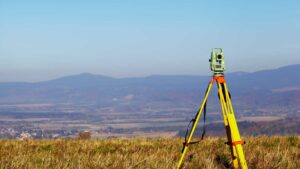In-Depth Insights into Subdivision Surveys in Glen Waverley
Understanding Subdivision Surveys: Importance and Impact
Subdivision surveys represent a vital process involving the division of a larger land parcel into smaller, clearly defined lots. This crucial procedure supports effective property development across Australia. It goes beyond mere boundary marking; it requires strict adherence to legal standards and precise measurements to ensure each lot is accurately delineated. Local councils oversee these surveys, enforcing a variety of regulations and guidelines that can vary significantly by region, thus influencing the subdivision process.
The critical role of accurate subdivision surveys is paramount for various stakeholders, including developers, landowners, and municipal authorities. These surveys form the foundational framework for land division, which is essential for the planning and construction of both residential and commercial developments. Without this essential groundwork, subsequent activities, from construction to real estate transactions, risk facing significant hurdles, including potential legal conflicts concerning land boundaries and difficulties in securing necessary development approvals.

Key Components Essential for Effective Subdivision Surveys
An effective subdivision survey hinges on several essential components, each contributing significantly to the accuracy of land division while complying with relevant local regulations:
- Boundary Surveys: These surveys accurately define the land’s boundaries, which is vital for determining the division method.
- Topographic Surveys: These surveys provide comprehensive information about the land’s contours, elevations, and various features, which are crucial for effective land-use planning.
- Utility Surveys: These surveys identify the existing utilities and services on the property, which are essential for future development and infrastructure planning.
Each element must be carried out with utmost precision, as any inaccuracies could lead to expensive legal disputes and planning complications. Understanding these components is essential for anyone involved in the subdivision process in Glen Waverley.
Legal Framework Governing Subdivision Surveys: What You Need to Know
The legal landscape surrounding subdivision surveys in Australia is intricate, requiring compliance with a blend of state and local regulations. Obtaining necessary permits and adhering to zoning laws are critical steps in this complex process. Each local council has distinct requirements, which may include public consultations, environmental assessments, and adherence to specific planning schemes.
Navigating these legal requirements can be challenging for property owners and developers. However, understanding the nuances of these regulations is crucial for successfully executing a subdivision. It guarantees that all necessary approvals are secured before any physical work begins, thereby reducing the risk of delays or penalties. Collaborating with a qualified surveyor who possesses a deep knowledge of local regulations can significantly streamline this process, enhancing both efficiency and manageability.
Expert Perspectives on Subdivision Surveys in Glen Waverley
The Methodology Employed by Professional Surveyors in Conducting Subdivision Surveys
Surveyors employ a variety of sophisticated tools and technologies to execute subdivision surveys with exceptional accuracy. Instruments such as GPS devices and total stations allow for highly precise measurements of land parcels. Moreover, surveyors often reference historical records to gain insights into past land usage and boundaries, which is essential for identifying any discrepancies that may emerge during the surveying process.
Within the unique landscape of Glen Waverley, surveyors frequently face challenges due to the region’s diverse topography and urban infrastructure. For example, when tasked with subdividing a property, surveyors may encounter densely populated areas where traditional surveying methods prove challenging. To overcome such obstacles, they may utilize aerial mapping technologies or drones, capable of capturing high-resolution images of the property, thereby enhancing planning and assessment capabilities.
Real-world case studies underscore the importance of engaging in thorough consultations with local councils to ensure that subdivision plans align with all regulatory requirements. By fostering strong relationships with these authorities, surveyors gain invaluable insights into evolving local policies and community needs, which ultimately bolsters their ability to deliver successful projects.
Challenges Faced by Surveyors During Subdivision Surveys
Surveyors in Glen Waverley encounter a myriad of challenges that require both technical skill and adaptability. One significant hurdle involves navigating complex terrains that can hinder accurate measurements and extend project timelines. Additionally, outdated or incomplete records can complicate these challenges, necessitating that surveyors proceed cautiously and conduct extensive research before commencing any survey.
The ever-changing nature of regulations presents another significant challenge. Local councils may revise zoning laws or development guidelines, impacting pre-approved subdivision plans. Surveyors must stay updated on these changes to ensure compliance and prevent costly delays. This necessitates continuous education and proactive engagement with local authorities, enabling surveyors to provide optimal service to their clients.
Effective communication is essential for navigating these challenges. By establishing clear channels of communication with clients, local councils, and other stakeholders, surveyors can address potential issues more effectively, ensuring that the subdivision process remains on track and adheres to all legal requirements.
Best Practices for Achieving Accurate Subdivision Surveys
Ensuring precision in subdivision surveys is critical for achieving favorable outcomes. Implementing best practices streamlines the surveying process while minimizing errors. One of the initial actions that surveyors should undertake is to routinely calibrate their equipment to ensure precise measurements. This practice not only enhances accuracy but also prolongs the lifespan of the tools utilized in the surveys.
Conducting thorough site inspections prior to initiating the survey is another essential best practice. These inspections enable surveyors to identify potential obstacles, such as existing structures, vegetation, or utility lines, that could impact the survey process. Equipped with this understanding, surveyors can formulate strategies to effectively address these challenges.
Maintaining open communication with all stakeholders throughout the surveying process is vital. Keeping property owners informed about progress, potential issues, and timelines fosters trust and transparency, ultimately leading to more successful project outcomes. By adhering to these best practices, surveyors in Glen Waverley can enhance their efficiency and ensure that subdivision surveys are completed accurately and within the established timelines.
Key Advantages of Subdivision Surveys in Glen Waverley
Exploring the Economic Advantages of Subdivision Surveys
Subdivision surveys offer numerous significant economic benefits that extend well beyond individual property owners. One of the most notable advantages is the potential for increased property values. By subdividing larger tracts into smaller, more marketable lots, property owners can capitalize on heightened demand, particularly in a thriving suburb like Glen Waverley. This surge in demand often translates into higher sale prices, benefiting sellers and contributing positively to the local economy.
Additionally, facilitating new development projects through subdivision surveys stimulates local economies. The emergence of additional residential and commercial spaces generates job opportunities within the construction industry and related sectors. This influx of employment can reduce unemployment rates and contribute to a more vibrant economic landscape.
Another economic benefit is the enhancement of community infrastructure. As new developments arise, local councils and authorities may invest in essential services such as educational institutions, roadways, and public transport, thereby improving the overall quality of life within the community.
- Increased property values through the creation of marketable parcels.
- Job creation within construction and related sectors.
- Economic stimulation driven by new developments.
- Enhanced community infrastructure and essential services.
The economic ripple effect of subdivision surveys underscores their importance not only for developers but also for the broader Glen Waverley community.
Maximizing Property Value Through Strategic Subdivision
The potential to enhance property value through subdivision is particularly relevant in competitive markets like Glen Waverley. By methodically dividing land into smaller parcels, property owners can significantly boost the marketability and overall worth of their assets. Smaller lots attract a wider range of potential buyers, from first-time homeowners to investors seeking rental opportunities.
For instance, a property owner with a substantial plot might contemplate subdividing it into three smaller lots. The revenue potential from selling these parcels individually often far exceeds what could be gained by selling the entire property as a single unit. This strategy proves especially effective in high-demand areas experiencing housing shortages, allowing owners to take advantage of favorable market conditions.
Moreover, subdividing land can create opportunities for tailored developments that meet specific community needs, such as affordable housing or mixed-use spaces. Such initiatives not only elevate property values but also positively impact the local community by providing diverse living options.
Improving Land Use Efficiency Through Subdivision Surveys
Subdivision surveys play a pivotal role in enhancing land use efficiency, especially in urban settings like Glen Waverley. By accurately mapping and dividing land, surveyors ensure that each parcel is utilized to its maximum potential, optimizing the land’s capabilities. Effective land-use planning can lead to more sustainable development, reducing urban sprawl while promoting higher-density living.
When land is divided thoughtfully, developers can create projects that align with community needs and environmental considerations. For example, a subdivision that integrates green spaces, parks, and community facilities significantly enhances residents’ quality of life while encouraging sustainable practices.
Furthermore, effective land use planning supports improved infrastructure development, ensuring that roads, utilities, and public services can adequately accommodate the increased population density. By aligning subdivision plans with broader urban planning objectives, surveyors contribute to the establishment of vibrant, well-functioning communities that thrive both economically and socially.
Steps for Preparing for a Subdivision Survey in Glen Waverley
Essential Documents to Gather for Your Subdivision Survey
Before embarking on a subdivision survey, property owners must assemble a comprehensive set of documents that provide vital information about the land. Key documents include property titles, which confirm ownership and detail any encumbrances; existing surveys that illustrate the current land layout; and zoning maps that outline local regulations and land-use designations.
Having these documents readily accessible is crucial for surveyors, as they offer insights into the land’s history and any potential limitations that may influence subdivision plans. For instance, zoning maps clarify permissible uses for the property and any restrictions that may apply, assisting surveyors in formulating compliant division strategies.
Property owners should also evaluate any easements or covenants that may affect the land. A thorough understanding of these elements enables a smoother survey process, reducing the likelihood of unexpected challenges arising during the subdivision.
Selecting a Qualified Surveyor for Your Subdivision Project
Choosing a skilled surveyor is critical for the success of a subdivision project. A qualified surveyor not only possesses technical expertise but also has a deep understanding of local regulations and community needs. When selecting a surveyor, property owners should consider various criteria, including:
- Experience: Look for a surveyor with a proven track record in conducting subdivision surveys in Glen Waverley.
- Local Expertise: Familiarity with Glen Waverley’s zoning laws and local council practices is crucial.
- Reputation: Seek recommendations and read reviews to assess the surveyor’s reliability and professionalism.
- Communication Skills: An effective surveyor should communicate clearly and keep clients informed throughout the process.
By engaging a qualified surveyor, property owners can ensure that their subdivision plans are executed efficiently and accurately, minimizing delays and complications throughout the process.
Understanding the Timeline and Costs Involved in Subdivision Surveys
The timeline and costs associated with subdivision surveys can vary widely based on factors such as the size and complexity of the land. Generally, these surveys may take several weeks to complete, particularly when navigating various stages, including planning, surveying, and obtaining required approvals.
Cost considerations also encompass various components, including survey fees, council application fees, and any necessary documentation or assessments. Property owners should be prepared for these expenses by researching average costs related to subdivisions in Glen Waverley and budgeting accordingly.
A clear understanding of the timeline and potential costs enables property owners to set realistic expectations and avoid unforeseen financial burdens during the subdivision process. Additionally, maintaining open communication with the surveyor regarding estimated timelines and fees can lead to a more seamless experience.
Securing Necessary Approvals for Subdivision Surveys
Prior to commencing a subdivision survey, it is essential for property owners to secure all necessary permits and consents from local councils and authorities. This process typically involves submitting detailed plans and documentation that outline the proposed subdivision. Ensuring that all approvals are obtained before starting work can prevent delays and legal complications later on.
Engaging with local councils early in the process provides insights into required approvals and can expedite the application process. Some councils may have specific guidelines or checklists for subdivision applications, making adherence to these requirements critical for a successful outcome.
Moreover, proactive communication with local authorities can help address any concerns or inquiries they may have regarding the subdivision. By fostering a collaborative relationship with local councils, property owners can navigate the approval process more efficiently, ensuring a smoother path to successful land division.
Case Studies Highlighting Successful Subdivision Surveys in Glen Waverley
Showcasing Exemplary Subdivision Projects
Analyzing exemplary subdivision projects in Glen Waverley provides valuable insights into effective strategies and best practices. One notable project involved dividing a large residential lot into multiple smaller parcels, which facilitated the construction of new homes in a high-demand market. This initiative not only addressed local housing needs but also significantly increased property values for the landowner.
During this project, the surveyor utilized advanced techniques, such as aerial mapping, to collect precise topographic data and streamline the planning process. By closely collaborating with the local council, they navigated zoning requirements effectively, resulting in a seamless approval process.
Another successful endeavor included a mixed-use development that integrated both residential and commercial spaces. This subdivision exemplified how innovative land use can enhance community engagement and functionality. By incorporating green spaces and public amenities, the project not only met housing demands but also fostered a vibrant community atmosphere.
Lessons Learned from Previous Subdivision Surveys
Insights gleaned from past subdivision surveys provide essential lessons on avoiding common pitfalls that can hinder the subdivision process. A frequent issue is the failure to account for existing utility lines, which can disrupt plans and lead to unexpected delays or expenses. Surveyors must conduct thorough utility surveys to identify any existing services and develop appropriate plans for their integration into new developments.
Moreover, overlooking zoning restrictions can pose significant challenges. Understanding local zoning laws is vital for ensuring that subdivision applications comply with regulations. Surveyors should maintain open lines of communication with local councils to stay informed about any modifications in zoning requirements that could affect their projects.
These lessons emphasize the necessity for thorough preparation and strategic planning throughout the subdivision process. By learning from past experiences, surveyors can refine their practices and enhance the efficiency and success of future projects.
Impact of Subdivision Surveys on the Community
Subdivision surveys have greatly influenced the community fabric of Glen Waverley, resulting in a broader array of housing options and improved local development. As new residential and commercial properties arise from subdivision initiatives, the area has experienced a notable increase in population growth and economic vitality.
A significant outcome has been the diversification of housing types available to residents. Through thoughtful subdivision practices, developers have created a range of housing options, including townhouses and medium-density apartments, catering to various demographics and housing needs. This increased variety has made Glen Waverley a more appealing place to live for families, professionals, and retirees alike.
Additionally, subdivision surveys have sparked important discussions regarding sustainable growth and urban planning, prompting local councils to reevaluate land use strategies. As community needs evolve, subdivision surveys provide critical data and insights that guide future planning initiatives, ensuring a balanced approach to development that considers environmental factors and resident quality of life.
Technological Innovations Transforming Subdivision Surveys
Exploring the Technological Advancements Enhancing Subdivision Surveys
Modern subdivision surveys significantly benefit from technological advancements that improve both accuracy and efficiency. Key technologies employed include drones, which serve as tools for aerial mapping and capturing high-resolution images of land. This technology enables surveyors to gather comprehensive data quickly and with minimal disruption to the site.
Geographic Information Systems (GIS) play a crucial role in subdivision surveys. GIS technology empowers surveyors to analyze spatial data, facilitating the visualization and assessment of various land characteristics such as topography, land use, and zoning regulations. This analytical capability is vital for informed decision-making throughout the subdivision process.
Moreover, 3D modelling software has become increasingly prevalent in the surveying industry. This technology allows surveyors to create detailed visual representations of proposed subdivisions, enabling clients and local councils to better understand the implications of new developments.
- Drones: Employed for aerial mapping and data collection.
- GIS: Facilitates spatial analysis and data visualization.
- 3D Modelling Software: Generates visual representations of subdivision plans.
- GPS Technology: Ensures precise land measurements and boundary delineation.
These technological advancements ensure that subdivision surveys are conducted with a high degree of accuracy, ultimately leading to more successful outcomes.
Enhancing Survey Precision Through Technology
Technology plays a pivotal role in enhancing survey precision, significantly minimizing the risk of human error. The integration of GPS technology allows surveyors to achieve remarkable accuracy when measuring land boundaries and dimensions. This precision is crucial for ensuring that subdivided parcels comply with legal standards and local regulations.
Furthermore, digitized data collection methods streamline the survey process. Surveyors can leverage software tools to input and analyze data efficiently, significantly reducing the time spent on manual calculations and enhancing overall accuracy. This digital approach allows for real-time data updates, ensuring that all stakeholders have access to the most current information throughout the surveying process.
The transition towards technology-driven surveying practices not only improves accuracy but also boosts productivity. Surveyors can complete projects more rapidly, benefiting developers and property owners eager to advance their plans.
Future Innovations Anticipated in Survey Technology
The future of subdivision surveys is on the brink of transformation as emerging technologies, such as artificial intelligence (AI) and machine learning, begin to take center stage. These innovations are expected to revolutionize the surveying process, significantly enhancing both accuracy and efficiency.
AI has the potential to analyze vast amounts of data, identifying patterns and providing insights that lead to better decision-making during the subdivision planning phase. This capability enables surveyors to consider factors that may have previously gone unnoticed, resulting in more informed and effective land use strategies.
Additionally, integrating machine learning algorithms can improve predictive analytics in surveying. By examining historical data from previous projects, surveyors can better anticipate potential challenges and develop proactive solutions for future subdivisions.
As these technologies continue to evolve, they will undoubtedly reshape the landscape of subdivision surveys, making them more efficient and accurate while addressing the changing needs of communities like Glen Waverley.
Successfully Navigating the Subdivision Process in Glen Waverley
Essential Steps for Successfully Completing the Subdivision Process
Effectively navigating the subdivision process requires a methodical approach that encompasses several essential steps. The initial phase involves planning, where property owners and surveyors outline the objectives of the proposed subdivision and assess the project’s feasibility based on local regulations and land use considerations.
Following the planning phase, the next step is executing the actual surveying. This includes boundary, topographic, and utility surveys to collect accurate data about the land. After completing the surveying, property owners must apply for permits and approvals from local councils, which often include public consultations and assessments to ensure compliance with zoning laws.
Upon receiving the necessary approvals, the final step is to formalize the subdivision by registering the new parcels with the appropriate authorities. This action legalizes the division and permits subsequent property transactions, marking the successful conclusion of the subdivision process.
Collaborating Effectively with Local Councils
Local councils play a crucial role in approving subdivision plans, making it essential for property owners and surveyors to cultivate strong relationships with council members. Engaging with local councils early in the process can facilitate approvals, as it allows surveyors to gain insights into council expectations and required documentation.
Maintaining consistent communication with council representatives helps address any concerns or inquiries that may arise, fostering a collaborative environment that supports successful project outcomes. Additionally, attending council meetings or community forums can provide valuable insights into local priorities and development goals, informing how subdivision proposals can align with broader community objectives.
Building a strong rapport with local councils not only streamlines approvals but also enhances the overall perception of the subdivision project within the community, paving the way for successful development.
Final Steps for Registering Your Subdivision
Once the surveying and approval processes are completed, finalizing and registering the subdivision becomes a critical step. This requires submitting the necessary documentation to the appropriate authorities, ensuring that the new parcels are officially recognized and registered in local land registries.
Successful registration legalizes the subdivision, allowing property owners to engage in transactions involving the newly created lots. This final step is vital for securing the rights that accompany ownership of the subdivided parcels, making it a crucial aspect of the overall process.
Additionally, property owners should verify that all documents are accurate and comply with local council requirements before submission. Any discrepancies or omissions can lead to delays, underscoring the significance of meticulous attention to detail during this stage.
Gaining Insight into Zoning and Land Use Regulations
Understanding zoning laws and land use regulations is essential to the subdivision process in Glen Waverley, as these laws dictate how land can be developed and utilized. Familiarity with these regulations is crucial for property owners and surveyors to ensure that subdivision applications meet necessary requirements.
Each local council maintains specific zoning classifications that outline permissible land uses, density restrictions, and development guidelines. Understanding these classifications assists surveyors in formulating subdivision plans that align with local regulations, minimizing the risk of rejections or delays during the approval process.
Moreover, staying informed about any changes to zoning laws is essential, as local councils may revise regulations to address evolving community needs or development goals. Engaging with council representatives and attending community consultations can provide valuable insights into upcoming changes, allowing surveyors to adjust their plans accordingly.
Financial Considerations and Associated Costs of Subdivision Surveys
Subdividing land entails various financial considerations that property owners must account for throughout the process. Key costs include survey fees, which can fluctuate based on the size and complexity of the land, as well as council application fees for permits and approvals. Additionally, property owners should factor in potential costs linked to environmental assessments and public consultations, which local councils may mandate.
Effectively budgeting for these expenses is crucial to avoid unforeseen financial burdens. Property owners should conduct thorough research to gauge the average costs associated with subdivision surveys in Glen Waverley and plan their finances accordingly.
It is also important to consider potential taxes and fees related to property transactions upon the completion of the subdivision. Understanding these financial implications equips property owners to navigate the subdivision process with greater confidence, ensuring they are well-prepared for the associated costs.
Frequently Asked Questions About Subdivision Surveys
What does a subdivision survey involve?
A subdivision survey entails dividing a parcel of land into smaller lots, a procedure essential for property development and regulated by local councils to ensure compliance with zoning laws.
Why are subdivision surveys critical for development?
Subdivision surveys are vital for accurately defining property boundaries, ensuring legal compliance, and facilitating the development of new residential and commercial spaces.
What documentation is needed for a subdivision survey?
Essential documents include property titles, existing surveys, zoning maps, and any relevant easements or covenants that may affect the land.
What is the typical duration for completing a subdivision survey?
The time required for a subdivision survey can vary, but it generally takes several weeks to finalize, depending on the size and complexity of the land.
What costs are associated with conducting subdivision surveys?
Costs may encompass survey fees, council application fees, environmental assessments, and any requisite documentation for permits, varying based on the project’s scope.
How do I select a qualified surveyor for my project?
Choose a surveyor based on their experience, local knowledge, reputation, and communication skills. Recommendations and reviews can also provide insights into their capabilities.
What challenges do surveyors encounter in Glen Waverley?
Surveyors often face challenges such as navigating complex terrain, dealing with outdated records, and ensuring compliance with evolving local regulations.
What economic benefits do subdivision surveys provide?
Subdivision surveys can enhance property values, stimulate local economies through new developments, and create jobs in construction and related industries.
How can subdivision surveys improve land use efficiency?
Subdivision surveys facilitate better land use planning, ensuring that each parcel is utilized to its fullest potential and leading to more sustainable development practices.
What role does technology play in modern subdivision surveys?
Technology enhances the accuracy and efficiency of subdivision surveys through tools like drones for aerial mapping, GIS for data analysis, and 3D modelling software for visualisation.
Connect with us on Facebook!
The Article: Subdivision Surveys in Glen Waverley: Expert Insights first appeared on https://writebuff.com
The Article Subdivision Surveys in Glen Waverley: Insights from Experts Was Found On https://limitsofstrategy.com
The Article Subdivision Surveys: Expert Insights from Glen Waverley First Appeared ON
: https://ad4sc.com










No responses yet